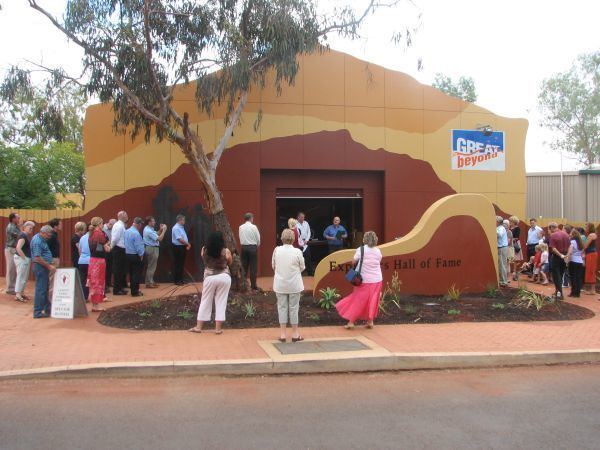Population 417 (2011 census) Postcode(s) 6440 Founded 1898 Local time Tuesday 2:55 AM | Established 1898 Elevation 461 m Postal code 6440 | |
 | ||
Weather 25°C, Wind S at 6 km/h, 56% Humidity | ||
Laverton, originally known as British Flag, is a town in the Goldfields-Esperance region of Western Australia, and the centre of administration for the Shire of Laverton. The town of Laverton is located at the western edge of the Great Victoria Desert, 957 kilometres (595 mi) north-northeast of the state capital, Perth, and 124 kilometres (77 mi) east-northeast of the town of Leonora with an elevation of 461 m.
Contents
Map of Laverton WA 6440, Australia
About a third of the population is of Aboriginal descent. The area is semi-arid, with a mean annual rainfall of 233 millimetres (9.2 in). It is also quite warm, with mean daily maximum temperatures ranging from 17 °C (62 °F) in July to 36 °C (97 °F) in January
Laverton is the westernmost town on the Outback Way - a proposed highway which goes through the Northern Territory to Winton in outback Queensland.
History
A number of early explorers travelled over the Laverton area, including John Forrest, David Carnegie and Frank Hann. Gold was discovered in the British Flag area in 1896 and many prospectors and miners moved into the area. Among them was Dr Charles W. Laver, who became an enthusiastic supporter and promoter of the region.
One of the most successful mines was Craiggiemore, and by 1897 a residential and business area known as British Flag had sprung up on the west side of the mine. In March 1898 a townsite was approved as Laverton, in honour of Dr Laver. In 1899, the residents sought to have a townsite surveyed, but by then the original location had become unsuitable, so a new site was chosen about three kilometres from the original lots. The new site was surveyed in July 1899 and the town of Laverton gazetted in July 1900.
By the late 1960s, Laverton was in decline, mainly because of the very low price of gold. In 1968 a Poseidon prospector Ken Shirley discovered nickel-bearing rocks at Windarra, 24 km northwest of Laverton. In 1969 Poseidon began drilling Windarra. In September rumours of a nickel strike prompted the famous Poseidon bubble. The deposit was developed by Western Mining and its partners into the Windarra Nickel Project, which mined and processed nickel ore from 1974 to 1991.
Modern industry
Laverton is primarily a mining area. There are two major operating gold mines in the district: the Wallaby Mine near Granny Smith, owned and operated by Gold Fields, and the Sunrise Dam Gold Mine, owned and operated by AngloGold Ashanti. Both open pit and underground mining is conducted at these mines. The Murrin Murrin laterite nickel project is located 55 km to the west, midway between Laverton and Leonora. The area has a long history of pastoralism with sheep, cattle and goats, and a substantial area of land is used in this way.
Demographics
According to census results from the Australian Bureau of Statistics, the population of the Laverton statistical local area fell from 2,078 to 730 in the five years from 2001 to 2006. Over this same period, the proportion of indigenous people in the area increased from 19% to 40%.
Climate
Laverton has a semi-arid climate with hot summers and mild to cool winters.
